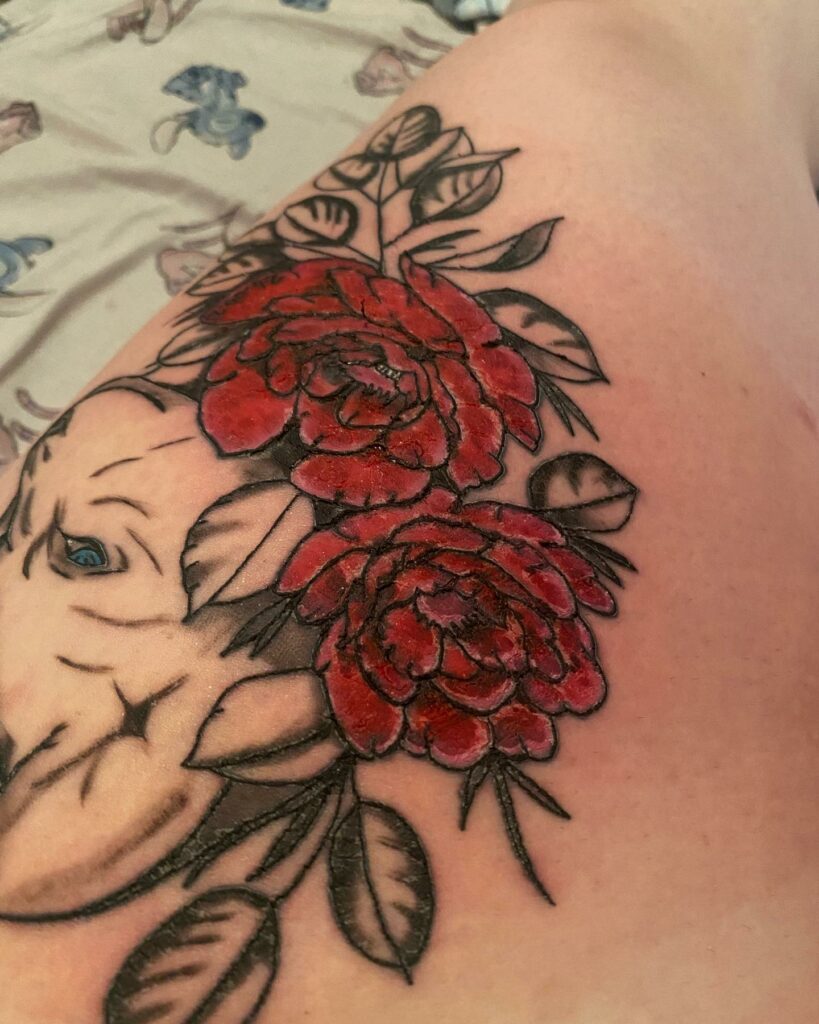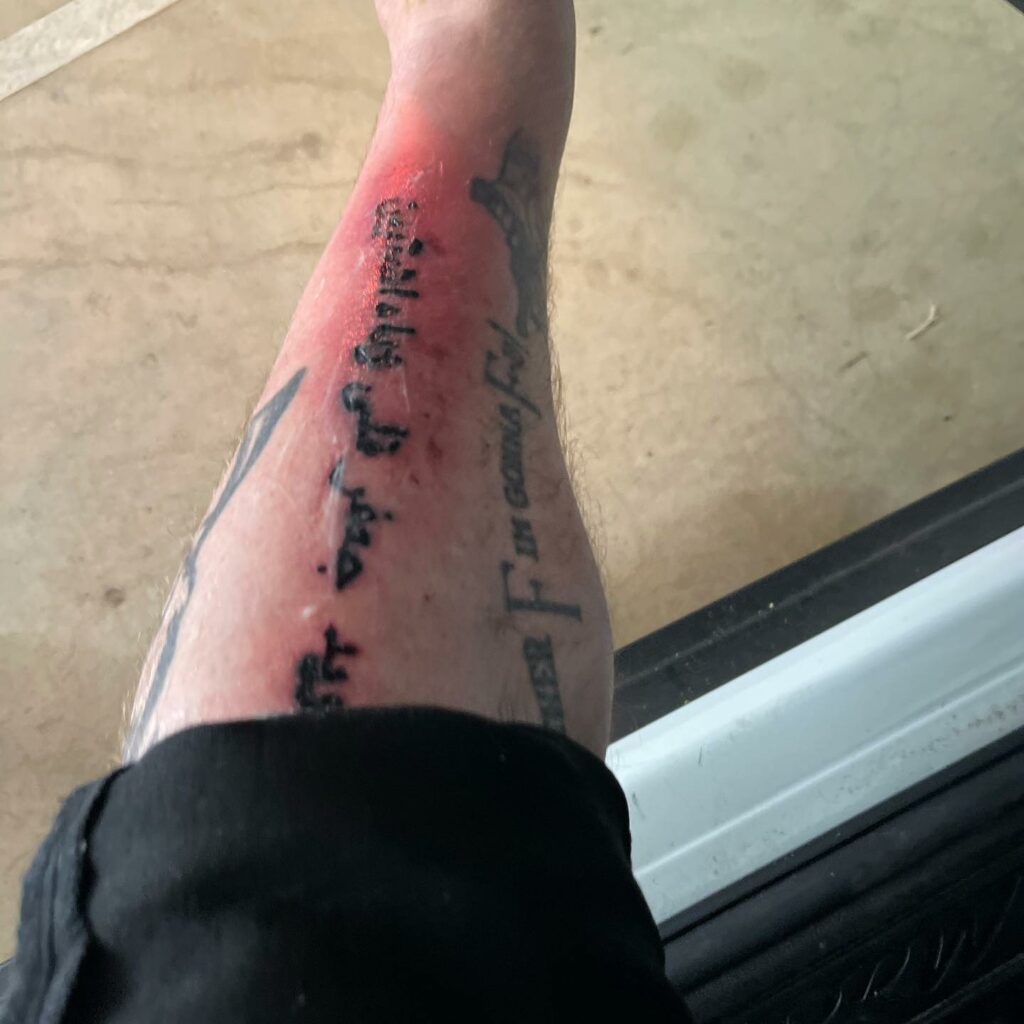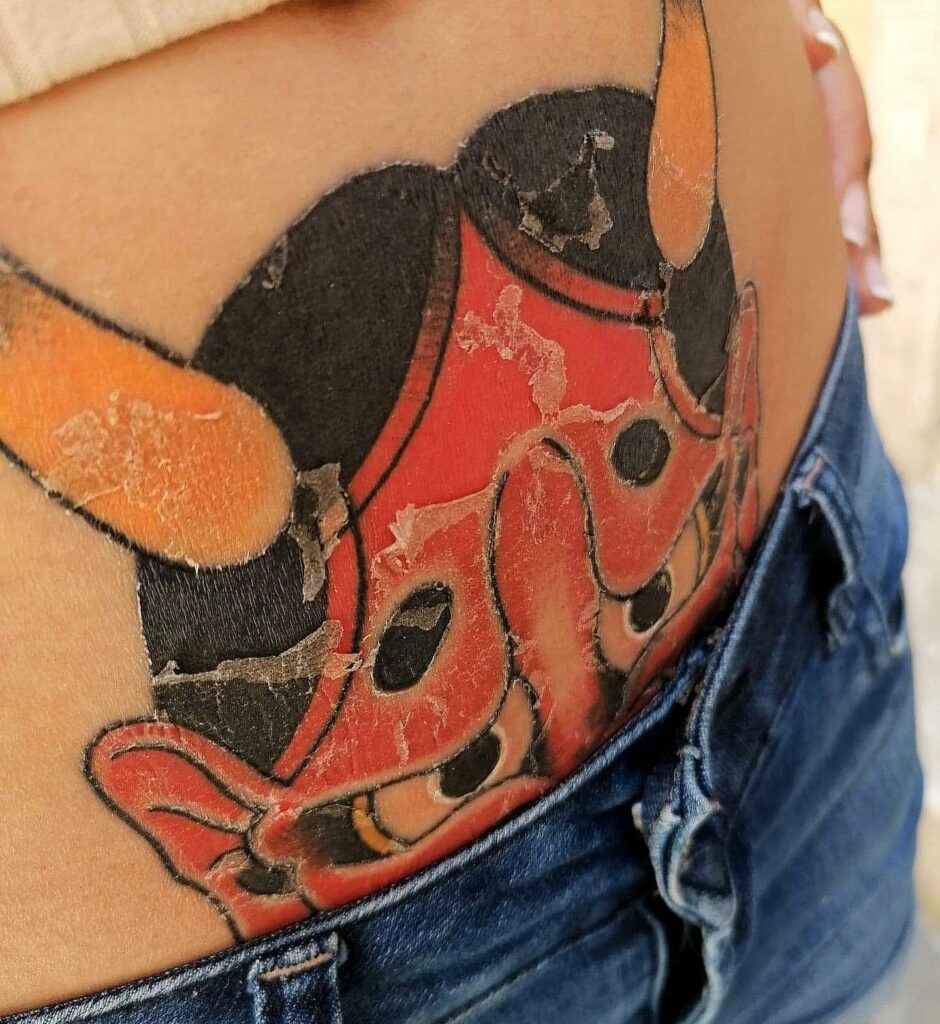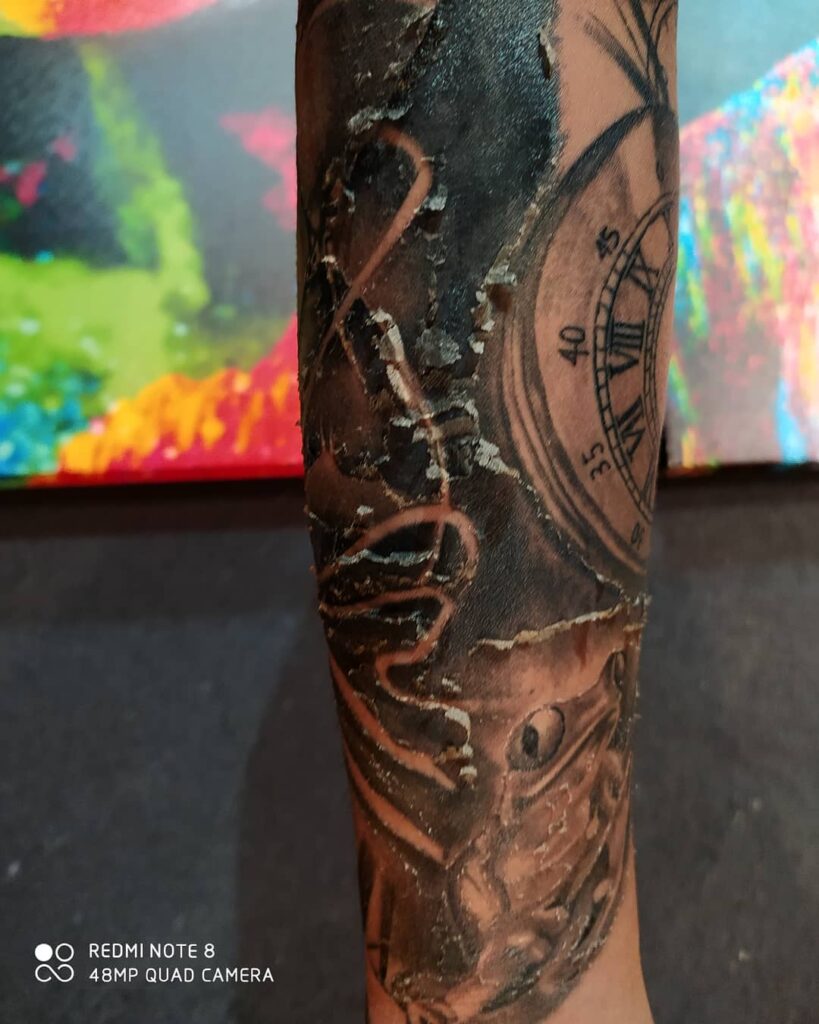Table of Contents
Today, we’re diving into a topic that puzzles many fresh canvas owners: why does a new tattoo sometimes take on a milky, cloud-like appearance? Have you ever had that moment of panic when your latest piece, instead of displaying sharp, vibrant colors, starts to resemble a watercolor painting left out in the rain? Rest assured, this isn’t an immediate cause for alarm, nor a signal that you should start scouting for a cover-up artist.

In this post, we will decode the mystery of the ‘milky tattoo.’ I’ll explain what’s happening underneath your skin, why it happens, and importantly, when it might be a sign that something’s gone awry. We’ll dive deep into the world of healing and aftercare, shedding light on the fine line between a healthy healing process and potential tattoo mishaps.
With my years in the industry and countless ink sessions under my belt, you’re not just getting textbook knowledge—you’re getting street-smart insights, delivered with the honesty and wit you’ve come to expect. So let’s dive in, shall we? Who knows, by the end of this, you might just become the next tattoo guru in your friend circle. It’s time to navigate the foggy waters of milky tattoos and come out clearer on the other side!
Breaking Down The Milky Mystery of Healing Tattoos
What’s up, ink lovers? It’s your tattoo guide, Tori, here to help you demystify one of the most perplexing stages of the tattoo healing process – that cloudy, milky appearance your new piece might take on. Remember when I got that intricate mandala piece on my arm, and I spent two weeks worried I had messed up my aftercare? Well, turns out, I was merely going through what we fondly refer to as the ‘milky phase’. It’s time to put your concerns to rest and embrace the fascinating journey of your tattoo from fresh ink to healed masterpiece.

Why Your Tattoo Might Look Milky
Impatience – we’ve all been there. You’ve finally got that piece you’ve fantasized about for ages, and all you want to do is flaunt it in its full, vibrant glory. But your skin has its own timeline, and rushing it just isn’t an option. It might surprise you, but the ‘milky phase’ is a perfectly natural part of your tattoo’s metamorphosis.
The Milky Phase
A tattoo, beneath all its beauty and symbolism, is technically a wound your body’s striving to heal. Your skin starts to recover the moment your tattoo needle punctures the dermis layer. This post-scab, pre-final form stage is what we often refer to as ‘the milky phase’.
Timing and Expectations

Worried about your tattoo looking more like a nebula than the vibrant piece you envisioned? Let’s shed some light on the timeline. The milky phase kicks in right after the majority of the scabbing has taken place. After a while, this milky layer will peel off, revealing the fresh, bold ink beneath.
Typically, this phase lasts between one to two weeks, but in some cases, it might stretch to a month. It’s a test of patience, but remember, your body knows best when it comes to healing. Once the scab falls off, don’t be dismayed by a somewhat duller version of your tattoo. This is just a protective layer of dry skin your body has grown to keep the fresh tattoo safe. Give it time, and you’ll see the true colors of your healed piece shine through.
Care Tips for the Milky Phase
During this milky stage, it’s vital to resist the temptation to pick or scratch the area. As someone who’s been there, done that, I can tell you, interference only leads to scarring, bleeding, or even infection. Instead, follow these aftercare tips to ensure your milky tattoo stays healthy and vibrant:
Moisturize
The importance of moisturizing cannot be overstated. Remember how diligently you applied lotion after getting inked? Keep up with it, even when the novelty wears off. One of my all-time favorite products is After Inked Tattoo Aftercare Lotion. It’s vegan, keeps your tattoo well hydrated, reduces itching, and accelerates healing. Using it from the get-go ensures minimal dryness and scabbing.

Avoid the Sun
Steer clear of direct sunlight as much as possible. Trust me, a sunburn on top of a healing tattoo feels like rubbing salt on a wound. Literally.
Stick to Showers
Avoid immersing your tattoo in water for extended periods, be it in a pool, bathtub, or ocean. Stick to showers while your skin is still shedding that final layer. Remember, the road to a beautiful, healed tattoo is paved with patience and diligent aftercare. Don’t rush it!

Other aftercare Tips
- Loose Clothing: Wear loose, breathable clothing over your tattoo to avoid friction, which can lead to scabbing and potentially affect the quality of your tattoo.
- Cleanliness: Keep your tattoo clean. Wash it gently with a mild, fragrance-free soap to help prevent infection. Pat the area dry gently; don’t rub.
- Healthy Lifestyle: A healthy body heals better. Make sure to get enough sleep, stay hydrated, and eat nutrient-rich food. Try to avoid stress as it can slow down the healing process.
- Avoid Scratching: As your tattoo heals, it can start to itch, similar to a sunburn when it starts to heal. Scratching can cause damage and possibly remove some of the ink, altering your tattoo’s appearance.
- Stay Fit the Right Way: While regular exercise is generally a good thing, be careful with workouts that stretch your skin or cause a lot of sweating, as this can impact the healing process. If your tattoo is in an area affected by movement, try to limit those exercises until the tattoo has healed.
Remember, each person’s healing process might vary slightly, and if you have any serious concerns, it’s best to consult with your tattoo artist or a healthcare professional.
Is it normal for the tattoo to look duller after the scab falls off?
Yes, it’s perfectly normal for a tattoo to look somewhat dull after the scab falls off. This is because there is an extra layer of protective skin that your body has produced over the fresh tattoo. This layer, which can often make the tattoo look dull or ‘milky’, is simply your body’s way of ensuring that the skin underneath remains fresh and protected while it completes the healing process.
This stage of healing can sometimes cause worry, as people may think their tattoo has lost vibrancy or is somehow ruined, but it’s just a part of the process. Once this protective layer naturally peels away, the true color and sharpness of your tattoo will shine through.
Remember to keep up your aftercare regimen even at this stage—continue moisturizing the area and protecting it from sun exposure. If you have any concerns about your tattoo’s healing process, don’t hesitate to reach out to your tattoo artist or a medical professional.
Signs Something Could Be Wrong
Even though the milky phase is a typical part of the healing process, it’s important to be prepared for potential issues that might arise. Here are some ways to handle those situations:
Tackling Excessive Scabbing
Scabs are a normal part of the healing process, and they protect the wound from infection. However, if your tattoo starts to develop very thick, large scabs, it might be a sign that your aftercare routine needs adjustment. Be sure not to pick at these scabs—doing so can pull the ink from your skin and affect the quality of your tattoo. If you’re noticing excessive scabbing, try to keep the area clean and moisturized, but avoid overdoing it with creams or lotions, as they can suffocate the skin and encourage even more scabbing.
Recognizing and Handling Infections
It’s rare, but tattoos can get infected. Signs of infection include severe redness and swelling, yellow or green discharge, a foul smell, persistent pain, and fever. If you suspect that your tattoo is infected, don’t try to treat it at home. It’s essential to reach out to a healthcare professional immediately. They can diagnose the issue and prescribe appropriate antibiotics if necessary.
Spotting an Allergic Reaction
Some people might have an allergic reaction to certain tattoo inks, especially colored ones. Symptoms of an allergic reaction include a rash, bumps, itching, redness, or swelling. If you suspect an allergic reaction, reach out to a healthcare professional. In the meantime, try to avoid scratching the area and use a hypoallergenic lotion to soothe the skin.
As always, don’t hesitate to reach out to your tattoo artist if you have any concerns. They’ve seen it all and can often provide advice or tell you if you need to seek medical attention. A good tattoo artist will always be happy to help ensure your new ink heals well and looks amazing for years to come.
Conclusion
In the grand symphony that is your tattoo’s healing journey, the milky phase is just one act. It might seem daunting, but remember, it’s a normal part of the process that paves the way to the grand finale – your beautifully healed tattoo. I cannot stress enough how important it is to be patient and respect your body’s timeline. Stick to regular moisturizing with a product like After Inked Tattoo Aftercare Lotion, keep that ink out of the sun, and opt for showers over baths. Most importantly, resist the urge to pick or scratch the tattoo, as this can lead to complications like scarring or infection. Be diligent with your aftercare, and you’ll soon be admiring your vibrant, healed artwork in all its glory. Remember, a tattoo is more than just a beautiful design; it’s a testament to your body’s incredible healing power. So, stay informed, stay positive, and most importantly, embrace every stage of your tattoo’s healing journey. Now, go forth and ink responsibly!




